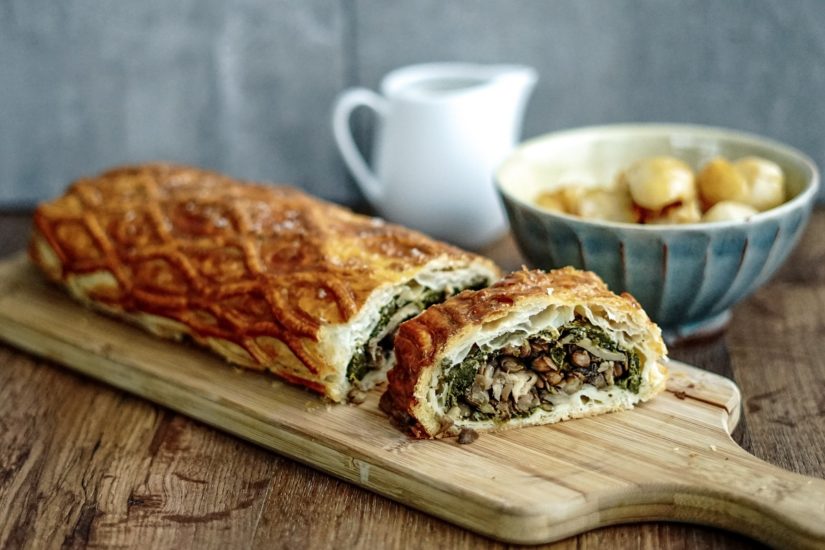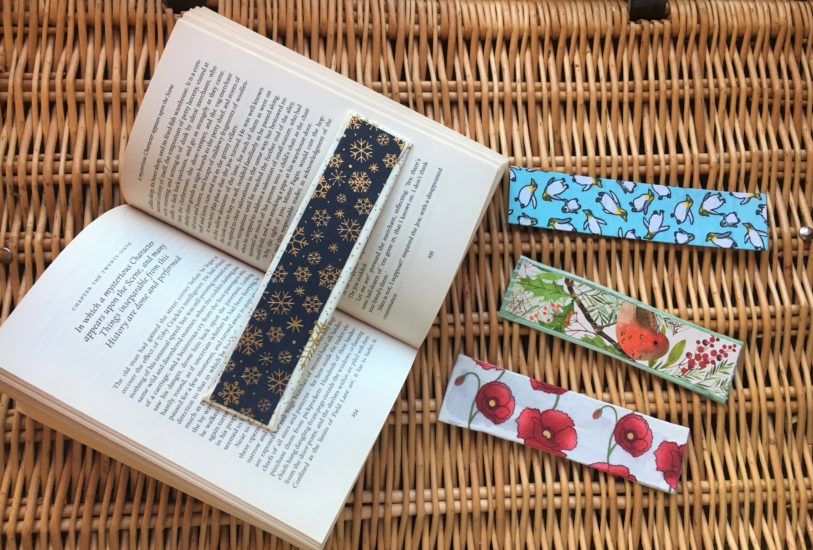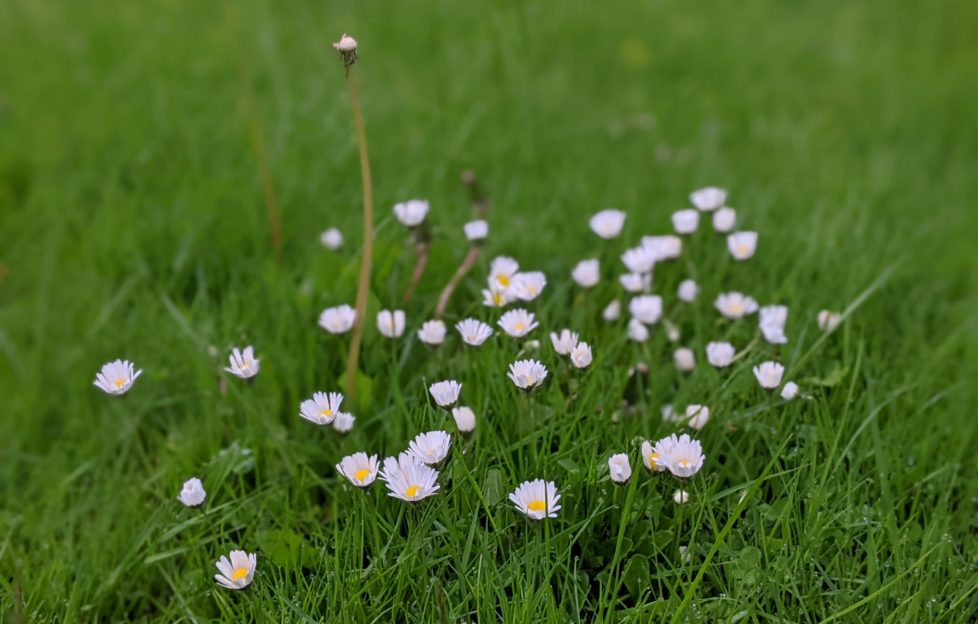
No Mow May is a campaign run by plantlife.org.uk. It’s a legitimate idea, designed to help pollinators and insects through this changeable month. By letting our lawns go, it provides food for them.
And yet I feel slightly ashamed of sharing these pics! And slightly ashamed of doing it at all. We are the only garden in our little neighbourhood that looks this ramshackle. Plus we’re also not fans of using weedkillers, so our gravel areas around the house are already the messiest amongst our neighbours.
A question of pride
It feels like we’re letting the area down! Though it’s lovely to step outside and hear the buzz of life around the garden. We’ve got bird nests in our two sheds, plants with flowers of blue and pink poking up around the edges of our driveway and bees all over the shop.
Last year we even had a tomato plant starting to grow under one of our outside taps! I’ve still no idea how that got there.
Yet I’m determined to see it through. I want a garden that’s humming with life, birds in the day and bats at night, just as it should be. I just hope our neighbours aren’t judging!
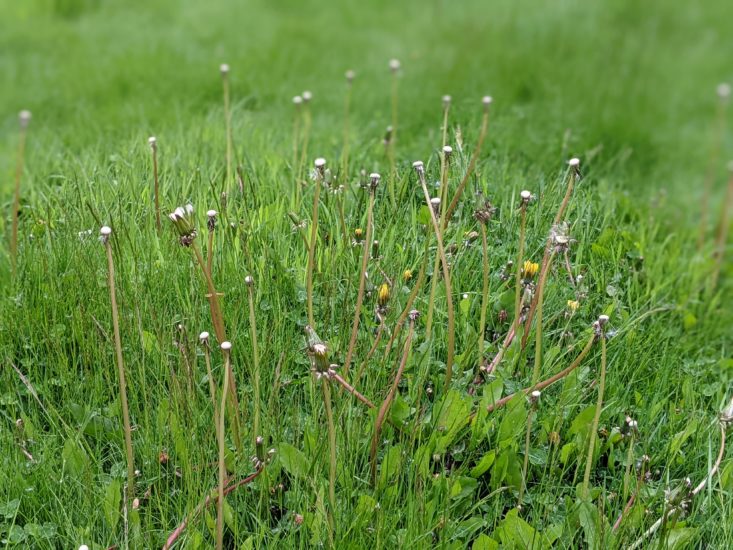
Photograph by Alex Dempster-Corlett.
A tough May
We’ve had a profusion of daisies and dandelions popping up since the last mow. The seeds from these have already blown away (hopefully not into the neighbour’s garden), but there are clearly still some flowers ready to pop out.
Which is good, as I’ve heard it’s been a tough month for insects and pollinators. Looking back at photos from previous Mays, this year’s cold and wet weather is unusual. It’s been tough for wee beasties, some of whom haven’t even come out yet because it’s so chilly.
Let it grow
I don’t know why it’s such a struggle to leave it alone. Something in me wants to go and give it a good mow, even though it’s got to the point now where it would take the best part of an afternoon. I guess it’s only human, to want things neat and under control.
But in recent years it’s become clear that we’re doing nature a massive disservice by being so obsessed with tidyness. Nature clearly prefers a bit of a mess. Piles of rotting woods are brilliant for bugs. Untamed nettle patches provide breeding grounds for butterflies. Dense, unmanicured bushes provide birds with protective homes.
It’s the urge for control that sees hedgerows and sandbanks being netted to prevent birds living there. Roadside verges offer travel corridors for a wide number of species, but are often mown down to stubble. Hedgerows are cut back using giant mechanical clippers, rather than the skills a traditional hedge-layer or farmer might employ to keep it healthy, consistent and dense.
Maybe we do just need to let things go a bit.
Nature’s lawnmowers
I’m fascinated by the field opposite our garden, where two horses live that belong to our neighbours. I know some horses like flowers, but these two trim the grass down to golf course level, whilst leaving an absolute abundance of daisies and buttercups.
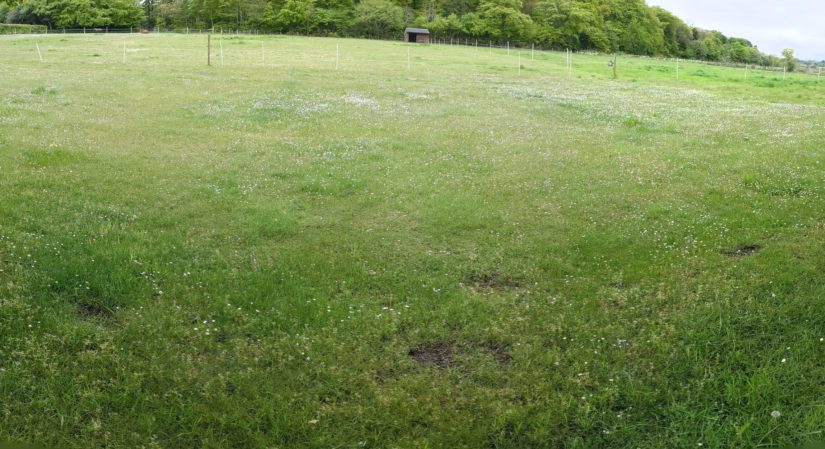
Photograph by Alex Dempster-Corlett.
I read once that Britain’s natural state would never have been one of complete woodland. There would always have been large areas of open pasture, thanks to large herbivores like horses, sheep and cattle. And the spaces they inhabit – when left to their own devices – are probably a good benchmark for our own private “pastures”. Our garden should probably look like that field.
Mission successful
Anyway, given that it’s only a week until June, I think we’re going to manage No Mow May. But if the weather gets warmer, then I’ll probably get on with tidying it up. After all, we’ve got a wee lad who we want to learn to play on the grass when the weather’s good.
Have you taken part in No Mow May? Have you created any deliberately wildlife-friendly parts to your garden, or just let some bits go for the benefit of nature? Do let us know through the usual means.
And if you want to read more about No Mow May, visit Plantlife’s website. You’ll also find info about the importance of road verges there, amongst other things.
I think the next thing we’ll sign up to is Flight Free 2021! We did it last year, but it was a bit of a cheat as no-one could anyway.
Don’t miss picking up the “Friend” for more wildlife-friendly features and eco tips. Subscribe to the weekly and the Special on our website!
Read more from Alex’s Features Ed blog by clicking here.



